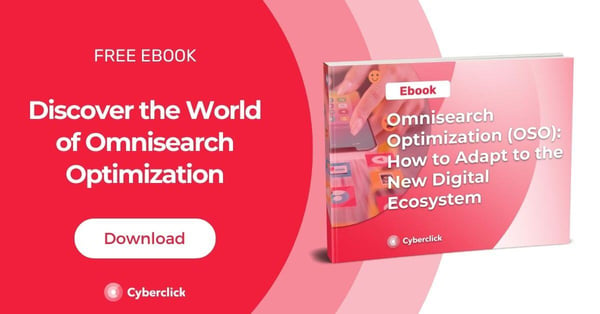Publishing blog posts here and there might generate short-term traffic, but if you're serious about ranking and staying visible in search results, you need a smarter strategy. Enter the content hub, an often overlooked, yet incredibly powerful SEO asset that organizes your content, boosts your authority, and improves user experience in one cohesive system.
Let’s break down why content hubs are so effective and how they give you a competitive advantage in search.

What Is a Content Hub?
At its core, a content hub is a centralized collection of interlinked content focused on a single, broad topic. It usually includes a pillar page, which acts as the main, comprehensive guide, and multiple cluster pages, which explore subtopics in greater detail. Everything is connected through internal linking, making it easier for users to navigate and for search engines to crawl and understand your site.
Instead of publishing isolated blog posts, a content hub ties everything together into a structured, hierarchical system with a clear theme. It’s not just a better content experience, it’s an SEO powerhouse.
Why Google Loves Content Hubs
Search engines are increasingly rewarding websites that demonstrate expertise, authority, and trustworthiness (E-A-T). Content hubs are designed to showcase all three.
When your site provides extensive, well-organized information on a specific topic, it sends strong signals to Google that you're an expert on the subject at hand. As a result, instead of ranking a single blog post, Google may begin ranking multiple pages from your hub, and even prioritize your pillar content as a featured snippet or “People Also Ask” answer.
The structured internal linking also helps Google understand the relationship between your content pieces, making it easier to crawl and index your pages. In short, content hubs give Google a clear map of your expertise.
They Signal Topical Authority
One of the biggest ranking factors in modern SEO is topical authority. Google wants to send users to sources that cover a topic comprehensively, not superficially. When your site has a dedicated hub that covers every angle of a subject, from beginner basics to advanced insights, it builds that authority over time.
For example, if you’re building a content hub around “SEO strategy,” having subpages on technical SEO, link building, keyword research, local SEO, and content optimization shows depth and breadth. Google recognizes that you’re not just throwing around buzzwords and that you actually know what you’re talking about.
They Increase User Engagement and Dwell Time
SEO isn’t just about keywords, it’s also about behavior. Google monitors user engagement metrics like time on page, bounce rate, and pages per session. A well-structured content hub naturally encourages users to stay longer and click deeper.
Instead of bouncing after reading a single blog post, visitors are more likely to explore multiple articles, guides, or tools within the same hub. This improved engagement not only signals quality to search engines but also increases the likelihood of conversions, whether that’s a newsletter sign-up, product purchase, or demo request.
They Improve Internal Linking and Crawlability
From a technical SEO standpoint, content hubs excel at internal linking, which plays a crucial role in distributing authority (PageRank) throughout your site. When you link relevant pages together using keyword-rich anchor text, you’re helping both users and bots understand the hierarchy and relationship of your content.
This makes it easier for search engines to crawl your site efficiently and ensures that your most important pages, like your pillar content, get the visibility and authority they deserve.
They Help You Rank for More Keywords
Because content hubs cover multiple angles of a topic, they allow you to target a broader set of short-tail and long-tail keywords. Your pillar page might rank for a competitive head term like “email marketing,” while your cluster pages rank for more specific searches like “best email segmentation tactics” or “email subject line examples.”
Together, this boosts your overall visibility in the SERPs and increases the total number of keywords you're ranking for, giving you more chances to capture organic traffic.
Future-Proof Your Content Strategy
A well-built content hub is an asset you can build on over time. As trends change or new subtopics emerge, you can simply add or update existing content within the hub. This creates a sustainable content model that evolves with your audience’s needs and continues to perform long after it's published.
Rather than constantly creating new standalone posts, your team can focus on reinforcing and expanding your existing hub, making your workflow more efficient and aligned with long-term SEO growth.
They Support Other Marketing Channels
The benefits of a content hub aren’t limited to SEO. These hubs become valuable assets for other marketing teams. Your social media team can repurpose individual posts into snippets and carousels. Your email marketing team can link to different parts of the hub in nurture sequences. And your paid media team can use hub content as high-converting landing pages for bottom-of-funnel campaigns.
Because hubs are designed with structure and value in mind, they tend to perform well across the board, not just in organic search.
Final Thoughts
If your blog feels disjointed or your content struggles to rank, it might be time to rethink your approach. A content hub is more than a tactic, it’s a long-term SEO strategy that helps you build authority, keep users engaged, and future-proof your digital presence.
Whether you're a startup or an established brand, investing in a content hub can transform the way you create, organize, and distribute content. It’s not just a tool for SEO, it’s the foundation of a smarter, more scalable content strategy.
Responsable de la estrategia de contenidos y visibilidad en Cyberclick, con enfoque Allbound y especialización en posicionamiento SEO, GEO y automatización con IA. Gestión avanzada del CRM con HubSpot: base de datos, workflows, lead nurturing, scoring y reporting. Experiencia en marketing digital, comunicación corporativa y periodismo, uniendo estrategia, creatividad y tecnología para captar y convertir leads cualificados.
Responsible for content and brand visibility strategy at Cyberclick, with an Allbound approach and specialization in SEO, GEO (Generative Engine Optimization), and AI-powered automation. Advanced HubSpot CRM management: database segmentation, workflows, lead nurturing, scoring, and reporting. Background in digital marketing, corporate communications, and journalism—combining strategy, creativity, and technology to attract and convert qualified leads.






Leave your comment and join the conversation